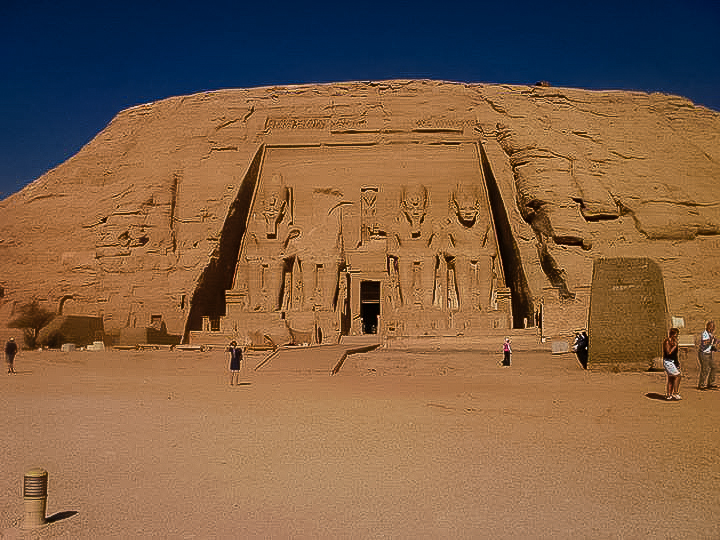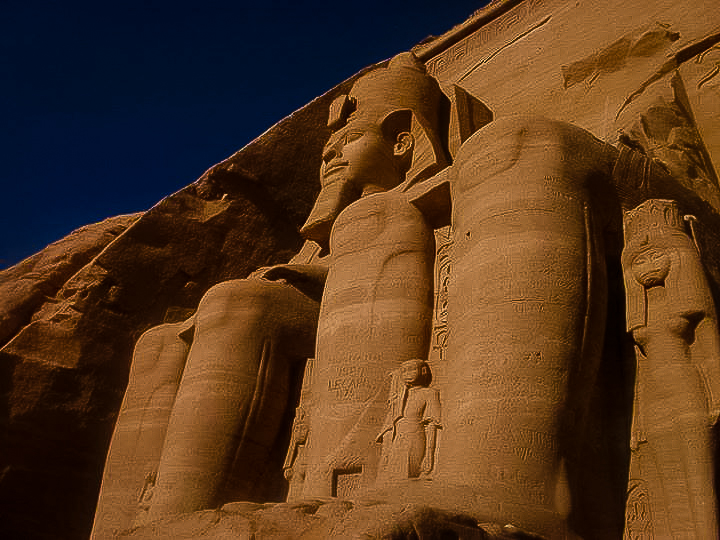An early 02:30 wakeup call got me up to breakfast before I boarded the bus in Aswan for a 5-hour ride to Abu Simbel.
We had to travel in a giant convoy because of the threat of kidnapping. We also had an armed guard on board with us; although what use he would have been if we had faced any danger is questionable. Almost as soon as he sat down at the front of the bus he placed his gun into the overhead storage area and fell asleep for almost the entire journey! For a bus journey that was mainly through the barren desert, once it became light, mirage spotting was my source of entertainment. I also was amused by the amount of police checkpoints and ambulance stations en route considering the sparse population.
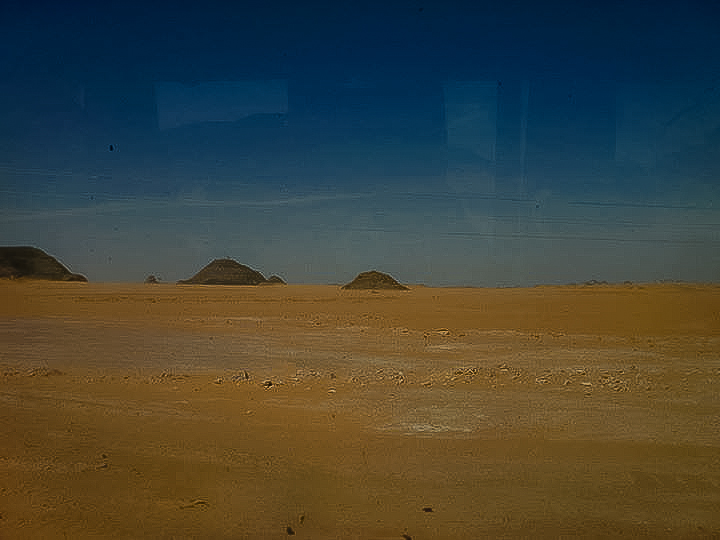
Mirage spotting on the way to Abu Simbel
We arrived at the temples early in the morning, before it got too hot. Temperatures here can reach well above 40c /100F during the day.
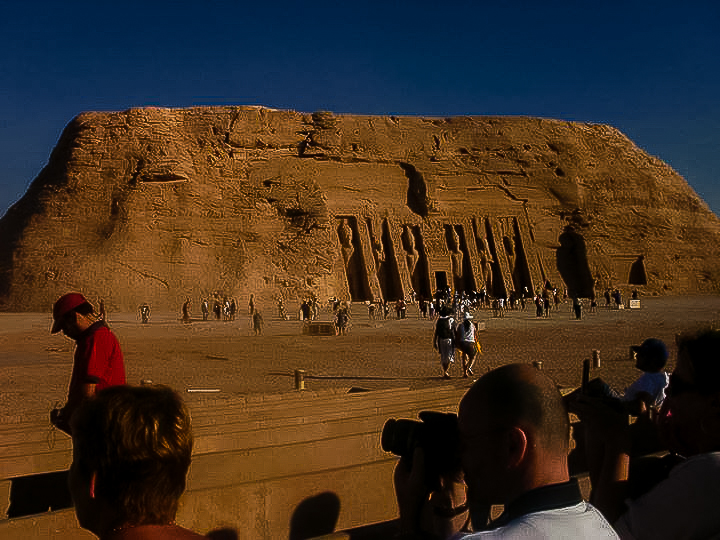
In my opinion, these were the most awe-inspiring temples in Egypt, and well worth the trip. With its gigantic rock-cut façade that was created to revere the mighty ruler Ramses II, Abu Simbel is simply stunning. Guarding the entrance to the temple, 4 colossal statues of Ramses II sat majestically staring out across the desert. Our guide Waleed explained the story of how the temples had been relocated in a multi-million dollar operation in 1972 because the creation of Lake Nasser threatened to erode the foundation of this temple complex. The temples were moved 200 meters back and 60 meters up from the original site to prevent them becoming submerged.
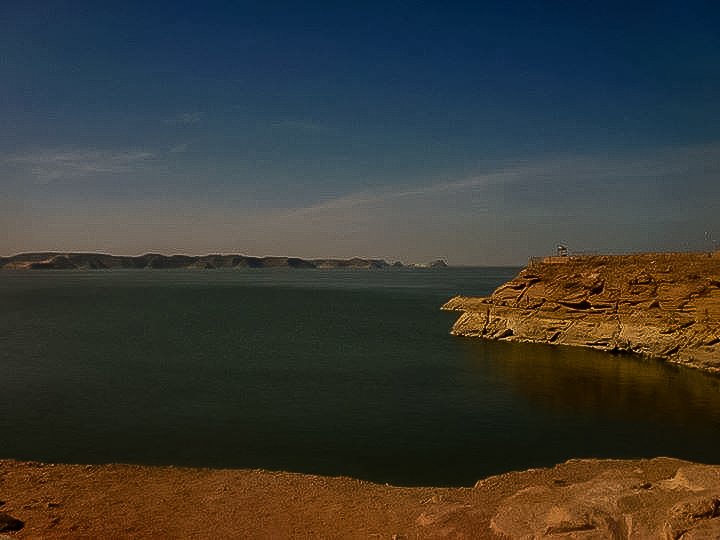
Lake Nasser – one of the largest artificial lakes in the world.
It is believed that the axis of the temple was originally positioned by the ancient Egyptian architects in such a way that on October 22nd and February 22nd, the rays of the sun would penetrate the sanctuary and illuminate the sculptures on the back wall, except for the statue of Ptah, the god connected with the Underworld, who always remained in the dark. These dates are allegedly the king’s birthday and day of coronation. People gather at Abu Simbel to witness this remarkable sight, twice a year on October 21st and February 21st.
